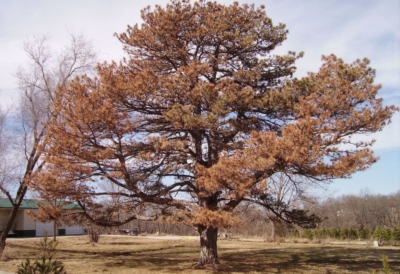Pine Wilt Disease
Pine Wilt Disease
Exotic pines are highly at risk of developing a lethal disease known as pine wilt disease, although native pines are not affected. The disease is spread through the pine sawyer beetle, which produces a 
High Summer Temperatures Are Required for Pine Wilt Disease
For the nematode to develop within pine sawyer beetle, high summer temperatures are a requirement. Since the nematode that develops is native, the native pines aren’t affected. The nematode lives in dead or dying pines, and will feed on the blue stain fungi that develop. The native plants have built a resistance, while the exotic pines and firs have never faced the nematode before.
Symptoms of Pine Will Disease
Colonization of the infection begins between June and July, although it will take a few more weeks for symptoms to appear. You’ll know if your tree is infected by the needles on the tree turning grayish and then tan, indicating death. This is due to the lack of water travelling around the tree. Some exotic tress, like the Scots pine, will wilt and then die. Others will only see the decaying on part of the tree, wilting one section before moving onto the next. The diseased trees will be dry, due to the resin production being prevented. Over time, a blue stain will start to appear. However, this staining can also be a sign of another problem. It’s best to hire a tree surgeon to look into the life of your plants. It’s not uncommon for pine wilt to be confused for other diseases.
Look Out for the Beetles
You will need to look out for signs of the wood boring beetles, known as long-horned or pine sawyer beetles. Removing the beetles will help to prevent the disease from taking hold. Look out for small exit holes around the base of trees for signs of the adult beetles leaving the tree during the summer months.


Comments are closed.